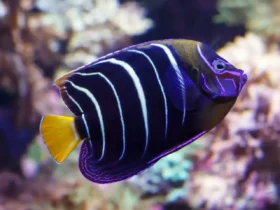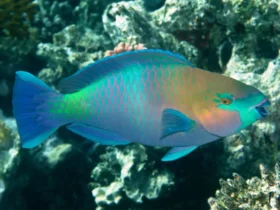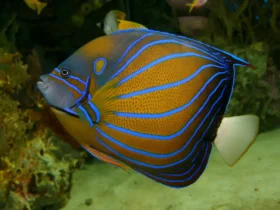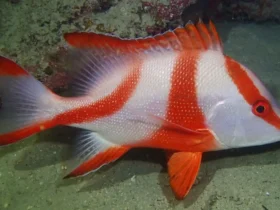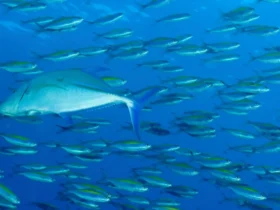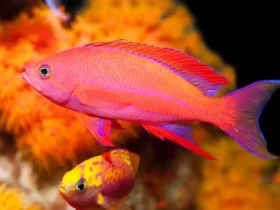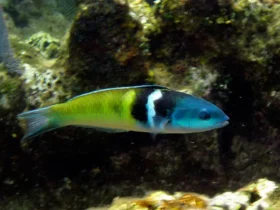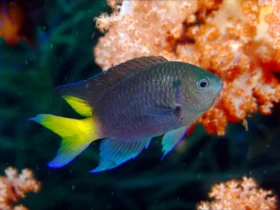Beneath the crystal-clear waters of tropical coral reefs, a small but striking fish commands attention with its vibrant colors and assertive personality. Meet the Pseudochromis diadema, commonly known as the Regal Dottyback. This captivating species belongs to the family Pseudochromidae and is renowned for its bold appearance and intriguing behavior. In this article, we will delve into the world of Pseudochromis diadema, exploring its characteristics, habitat, feeding habits, and the unique allure it brings to the underwater realm.
Pseudochromis diadema images
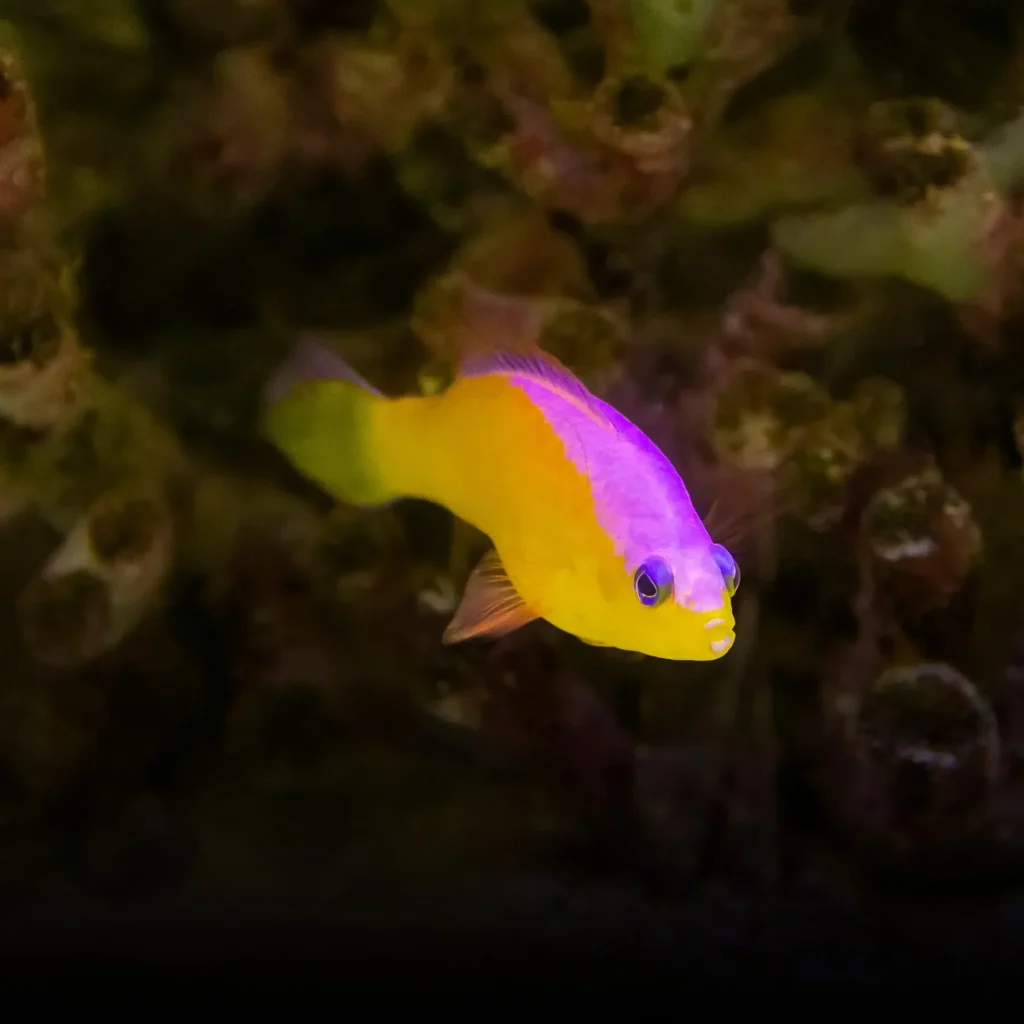
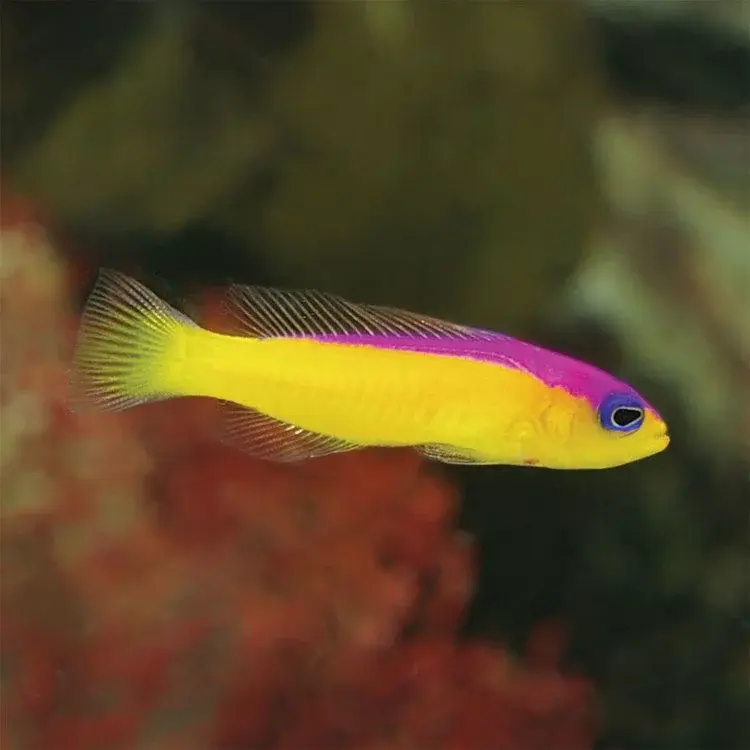
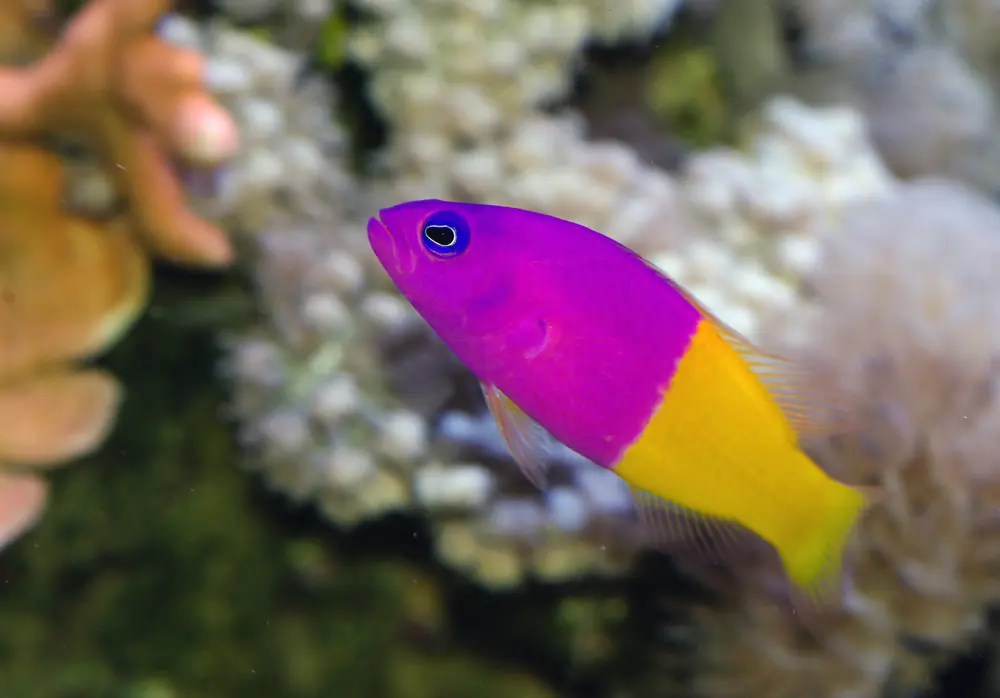

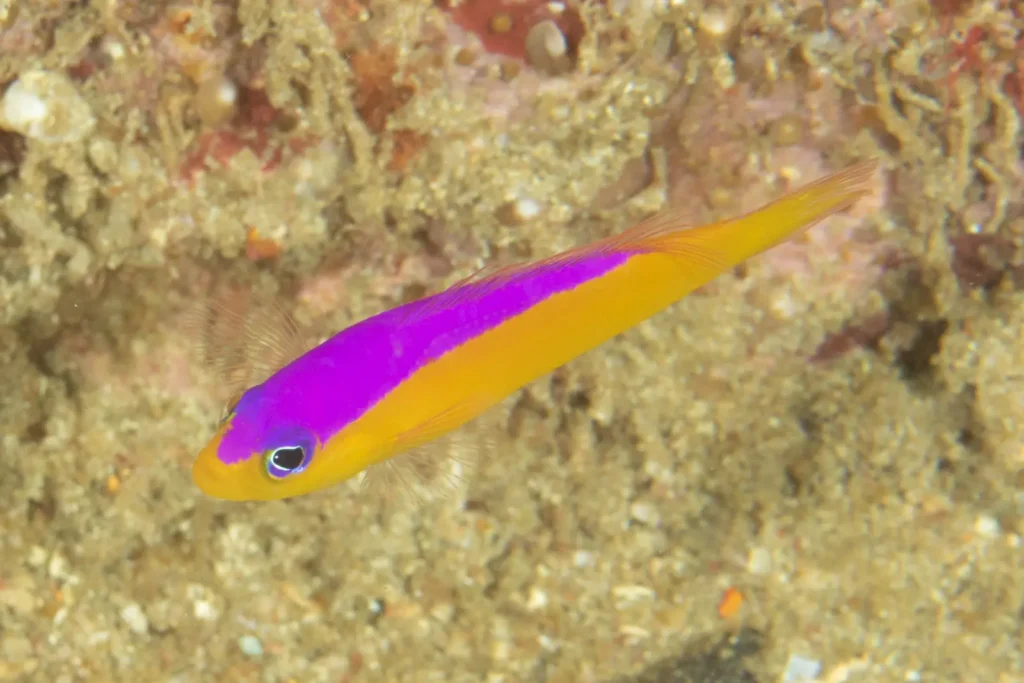
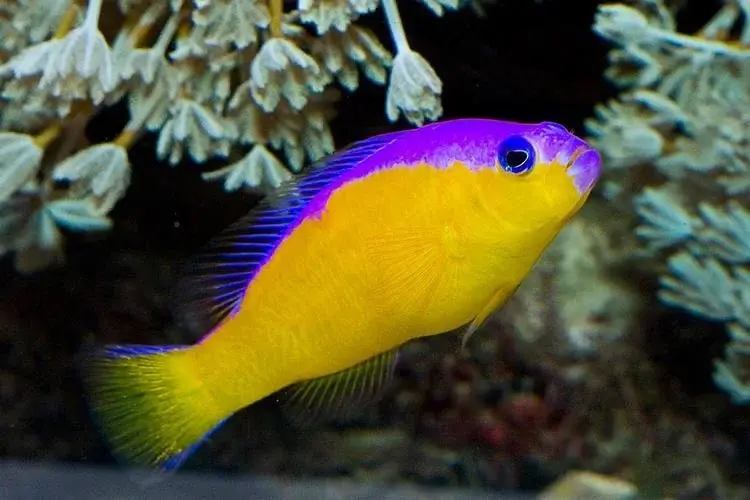
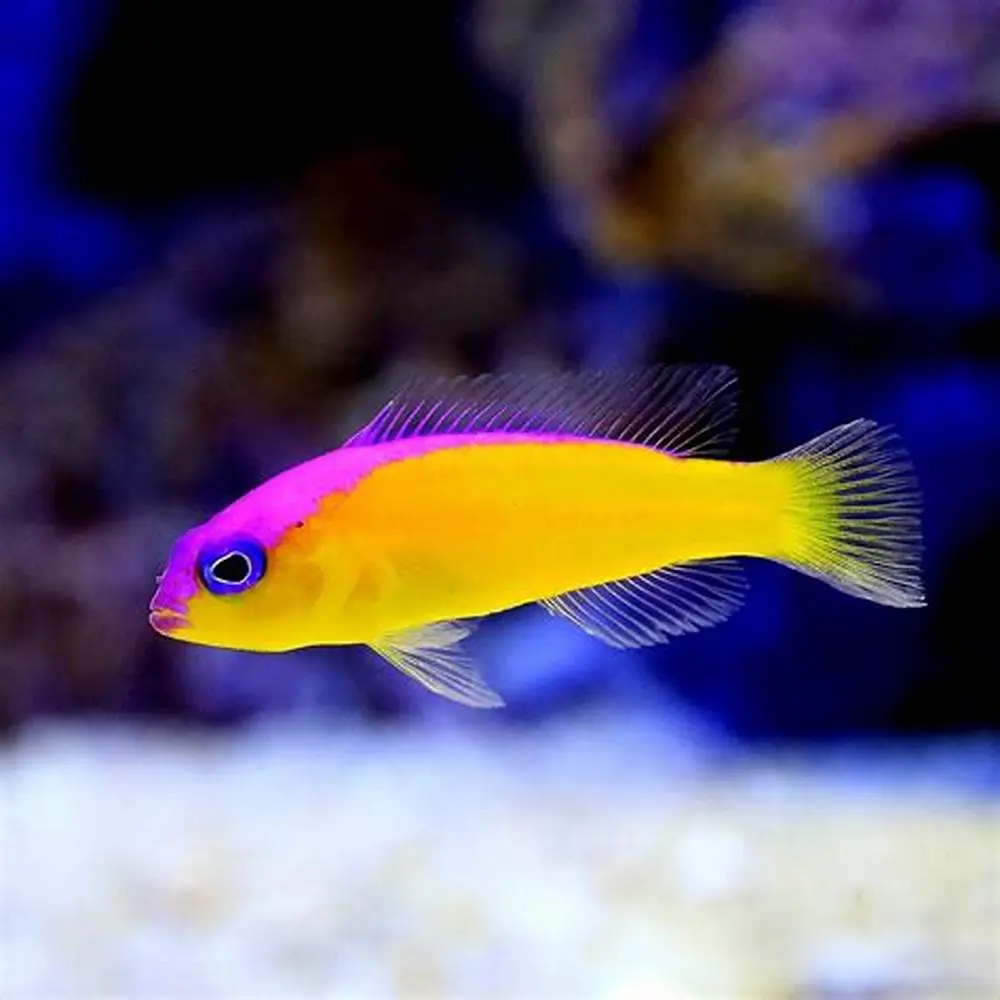

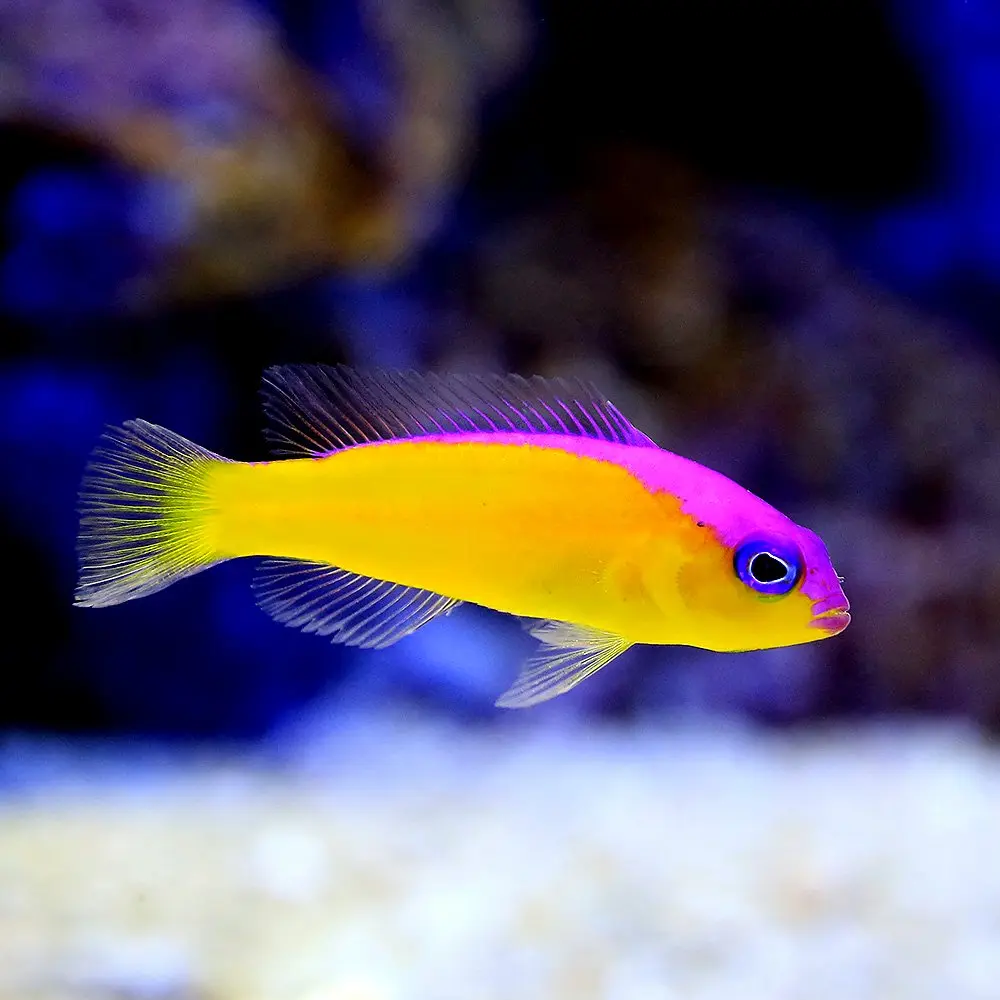
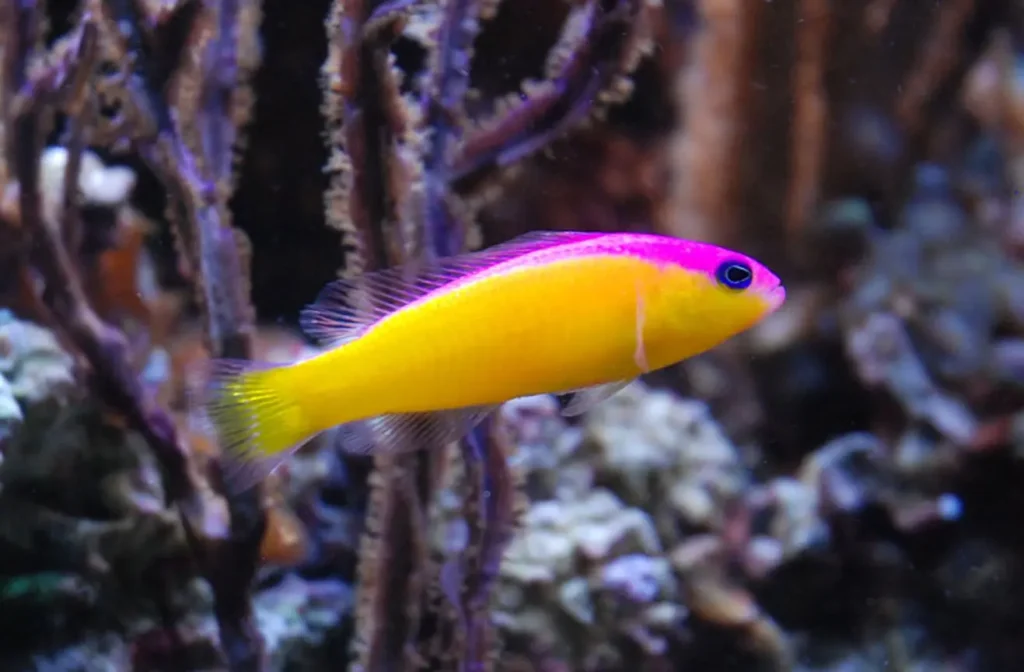
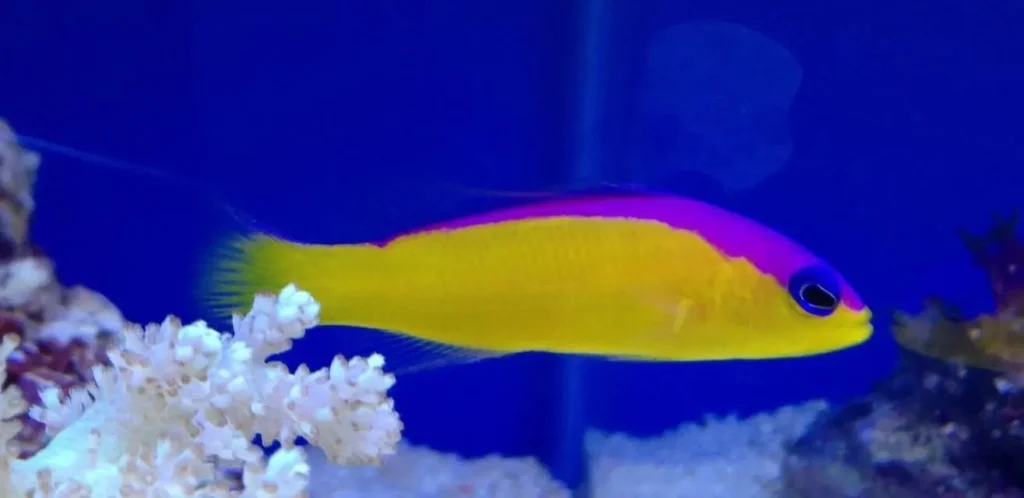
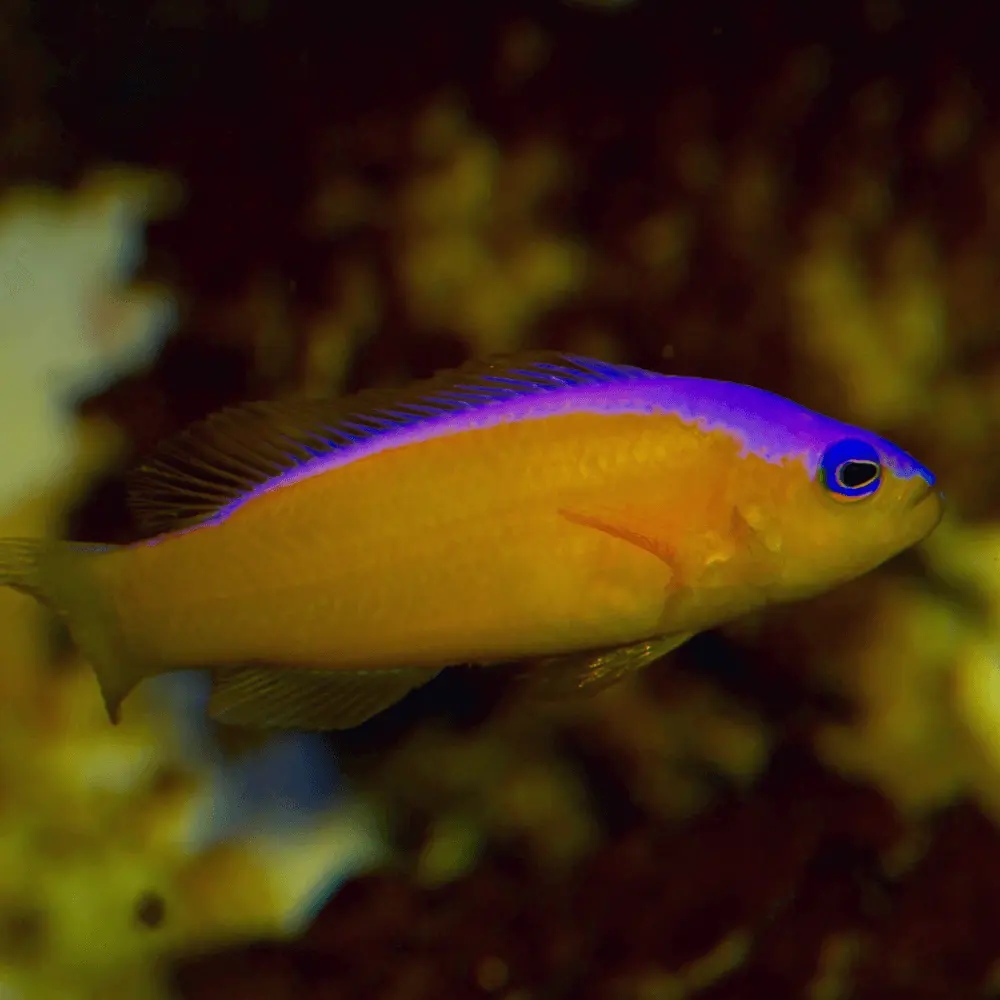
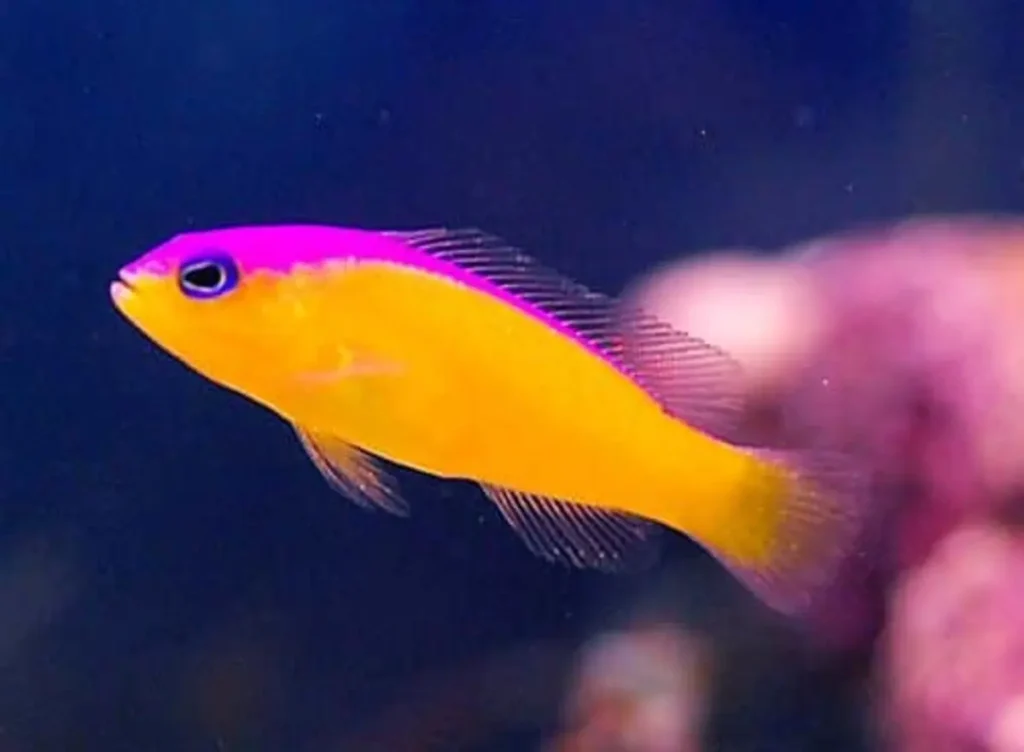
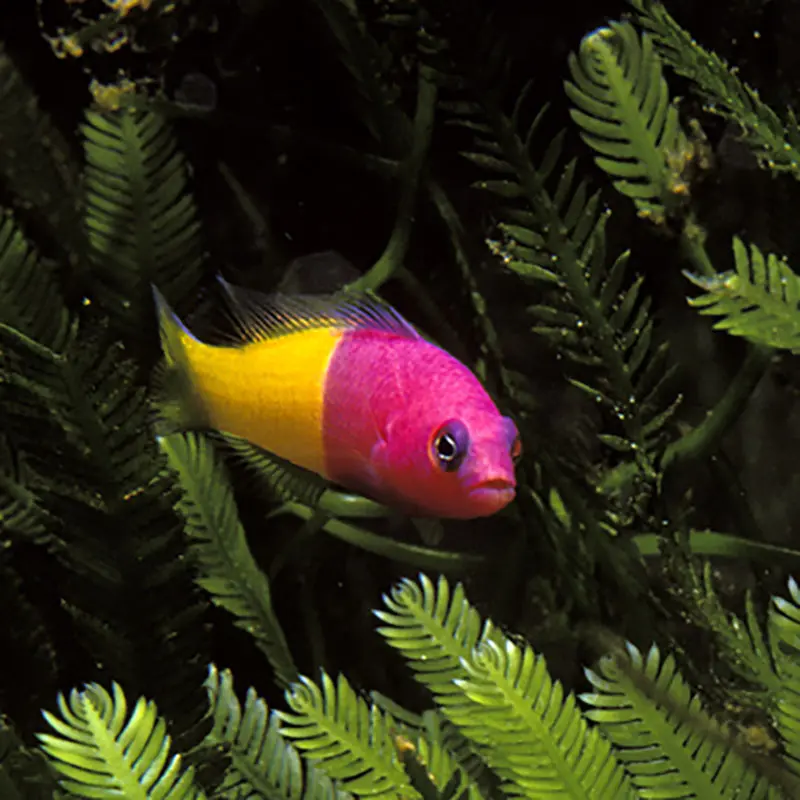
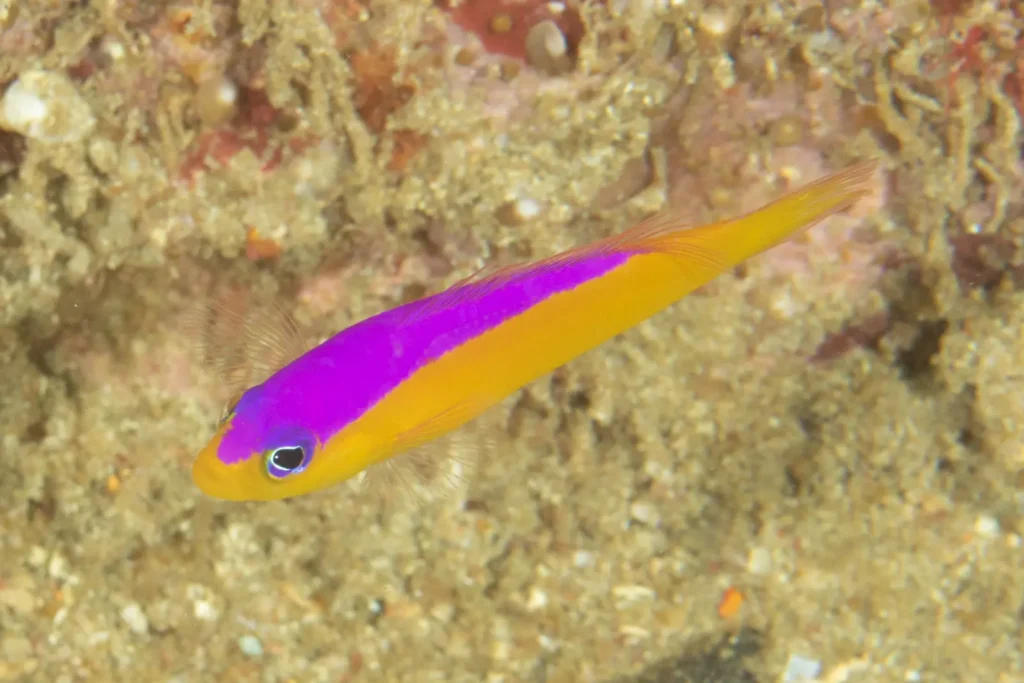
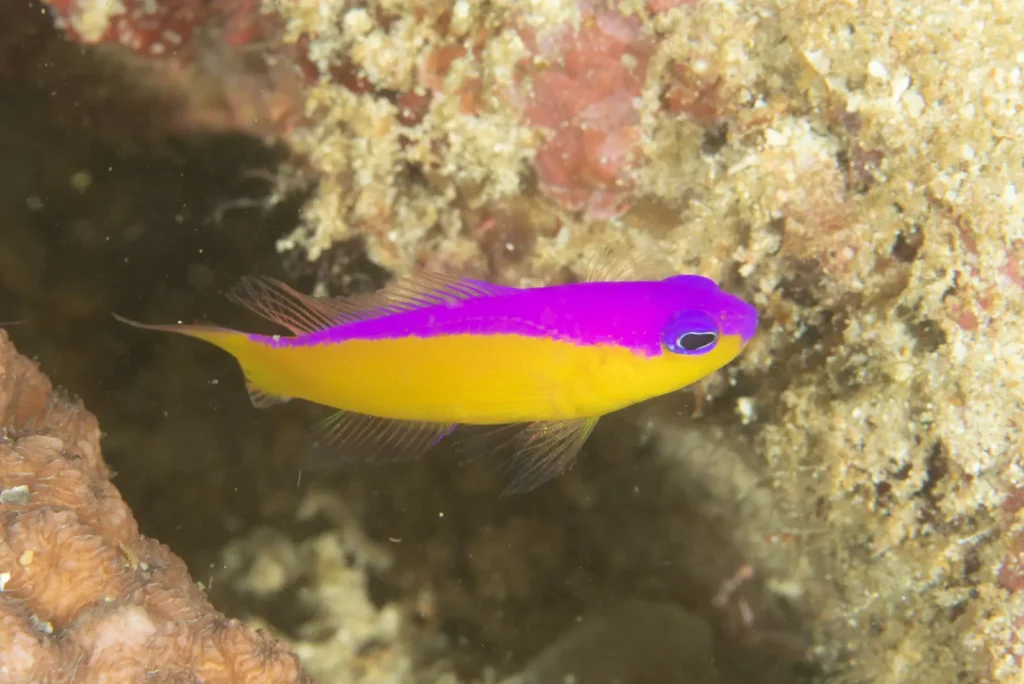
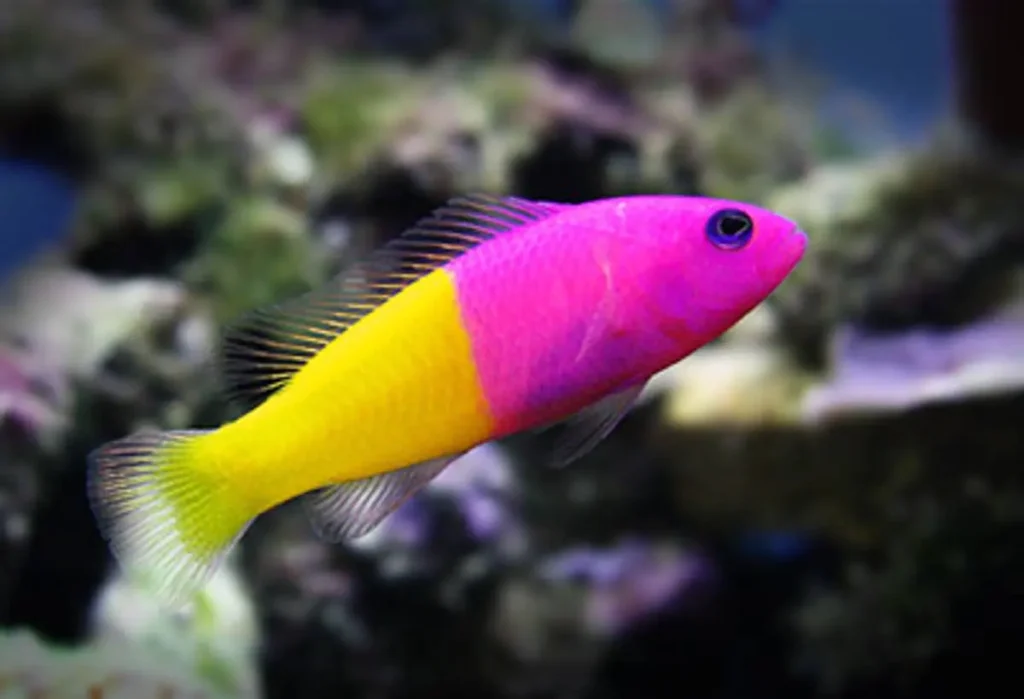
Appearance and Coloration
The Pseudochromis diadema stands out for its regal beauty. It features a slender body with a distinctive elongated dorsal fin that gives it an elegant appearance. Its coloration is a striking combination of deep purples, blues, and blacks, with a contrasting yellow or white tail. The vibrant hues are complemented by intricate patterns, including horizontal lines and spots that further enhance its allure. The Regal Dottyback’s radiant colors make it a standout resident of the coral reef ecosystem.
Habitat and Distribution
Pseudochromis diadema is native to the tropical waters of the Indo-Pacific region, including the Red Sea, the Great Barrier Reef, and various other coral reef systems. It inhabits reef slopes, lagoons, and outer reef areas with abundant coral coverage. These areas provide the necessary shelter and food sources for the species to thrive. Regal Dottybacks are known for their territorial nature, staking out small territories within the coral reef where they can establish their dominance.
Behavior and Feeding Habits
The Regal Dottyback is known for its assertive behavior and aggressive tendencies, especially towards other fish species. It will fiercely defend its territory from intruders, using its small but sharp teeth as a deterrent. Pseudochromis diadema primarily feeds on small crustaceans, including amphipods and copepods, as well as tiny fish and various invertebrates. Its streamlined body and agility enable it to dart in and out of coral crevices and hunt prey with precision.
Breeding and Reproduction
Pseudochromis diadema follows a monogamous mating system, with pairs forming long-lasting bonds. After a courtship ritual that involves intricate swimming displays, the female lays adhesive eggs on the underside of rocks or within coral crevices. Both parents actively guard and care for the eggs until they hatch, exhibiting exceptional parental care within their small territory.
Conservation Status and Threats
The Pseudochromis diadema is not currently assessed separately for conservation status, but it is generally considered common within its range. However, like many coral reef species, it faces threats due to habitat degradation, overfishing, and the impacts of climate change. The destruction of coral reefs and the loss of key prey species can have a significant impact on the population of the Regal Dottyback. Protecting coral reef ecosystems and promoting sustainable fishing practices are crucial for the long-term survival of this charismatic species and the preservation of biodiversity in general.
The Pseudochromis diadema, or Regal Dottyback, with its stunning colors and bold personality, is a captivating resident of the coral reef community. Its presence adds vibrancy and excitement to the underwater world, making it a favorite subject for divers, photographers, and marine enthusiasts. As we continue to explore and appreciate the wonders of coral reefs, let us also strive to protect and conserve these fragile ecosystems to ensure the survival and thriving of species like the magnificent Pseudochromis diadema for future

